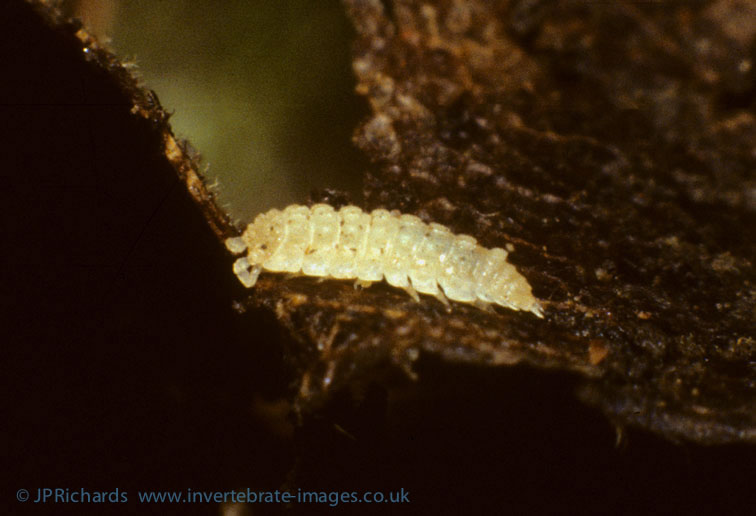Haplophthalmus mengii (Zaddach, 1844)
Common name
Synonyms
- Haplophthalmus mengei
- Haplophthalmus mengii sensu stricto
- Haplophthalmus mengii seg.
Status:
GB IUCN status: Least Concern
ID Difficulty
Identification
The pygmy woodlice of family Trichoniscidae (and Styloniscidae) are readily distinguished from other woodlice by the shape of the antennal fagellum which comprises a tapered cone (of indistinct segments) bearing a terminal bristle.
The genus Haplophthalmus is readily recognised by having distinct longitudinal dorsal ridges on the body which has a continuous body outline (all other trichoniscid woodlice have a stepped body outline) and has eyes composed of a single black ocellus.
This is a difficult genus and only male specimens of H. mengii can be distinguished from H. montivagus. Both are small species, up to 4mm in length and both, in addition to distinct longitudinal dorsal ridges, have a distinct pair of dorsal projections on the third pleonite (these are at most feebly developed in H. danicus).
The 7th pereiopod of male H. mengii bears a distinct spine on the carpus and short club-shaped spines on the propodus (see image right).
Distribution
There are verified records for H. mengii from across the full breath of Britain (including Shetland) and Ireland.
Habitat
It inhabits a wide range of semi-natural and synanthropic habitats, both inland and on the coast.
It is typically found clinging to the underside of deeply embedded stones and dead wood. It also occurs among friable humus-rich soil, well-rotted compost and, on the coast, within damp peaty soil that accumulates below shingle or boulders.
This summary is based on the detailed account in Gregory (2009).
References
Gregory, S. (2009) Woodlice and Waterlice (Isopoda: Oniscidea & Asellota) in Britain and Ireland. Field Studies Council/Centre for Ecology & Hydrology.
Links
World List of Marine, Freshwater and Terrestrial Isopod Crustaceans: https://www.marinespecies.org/isopoda/aphia.php?p=taxdetails&id=260535










